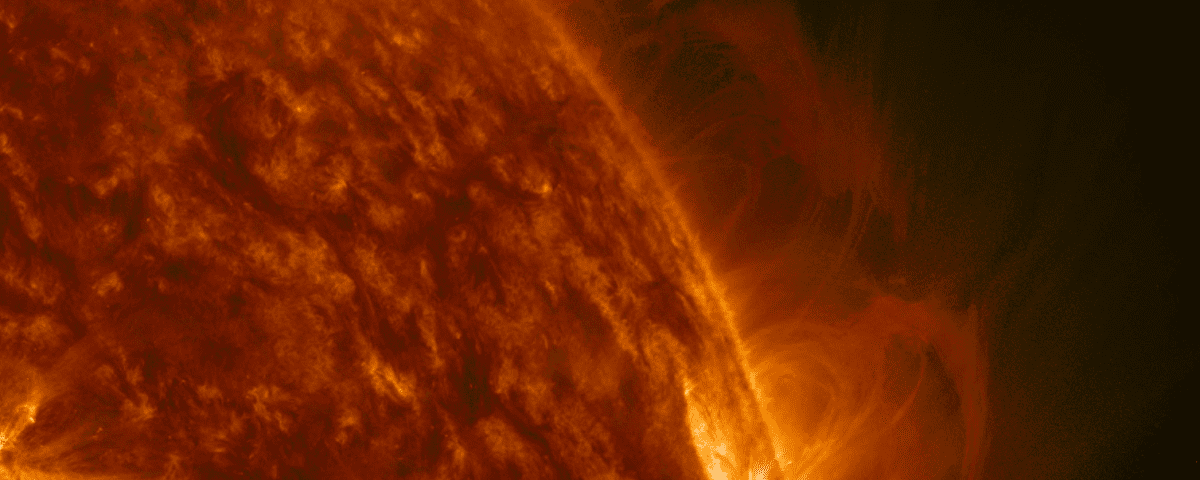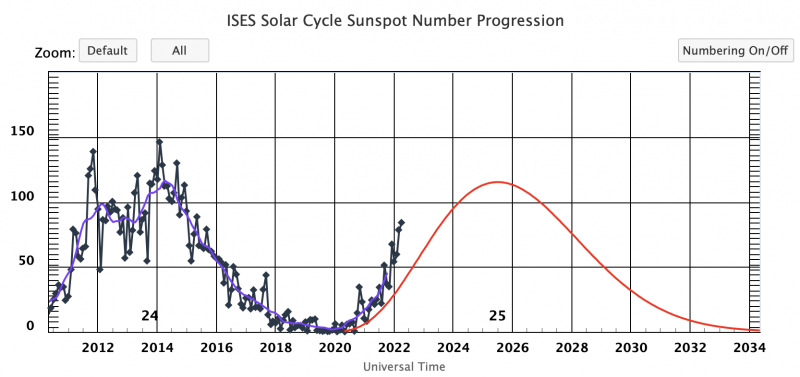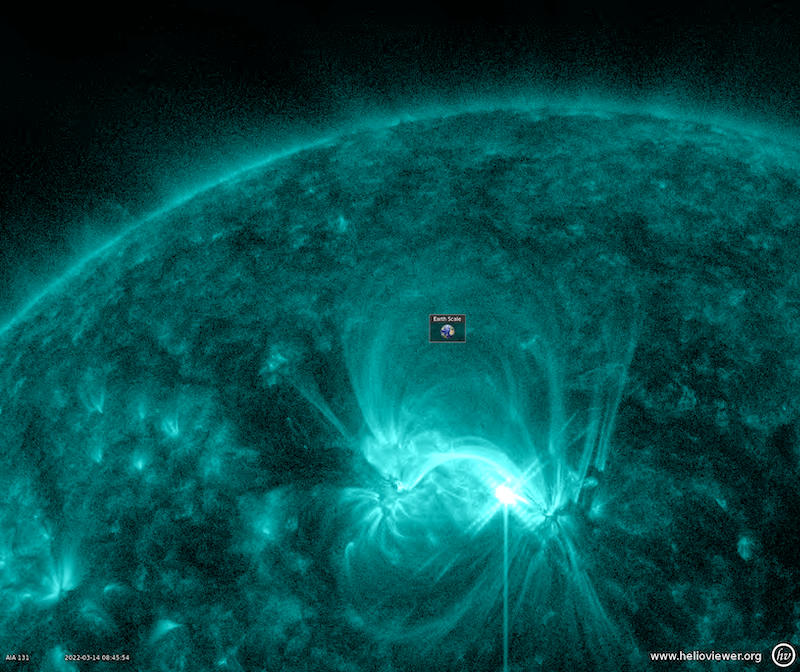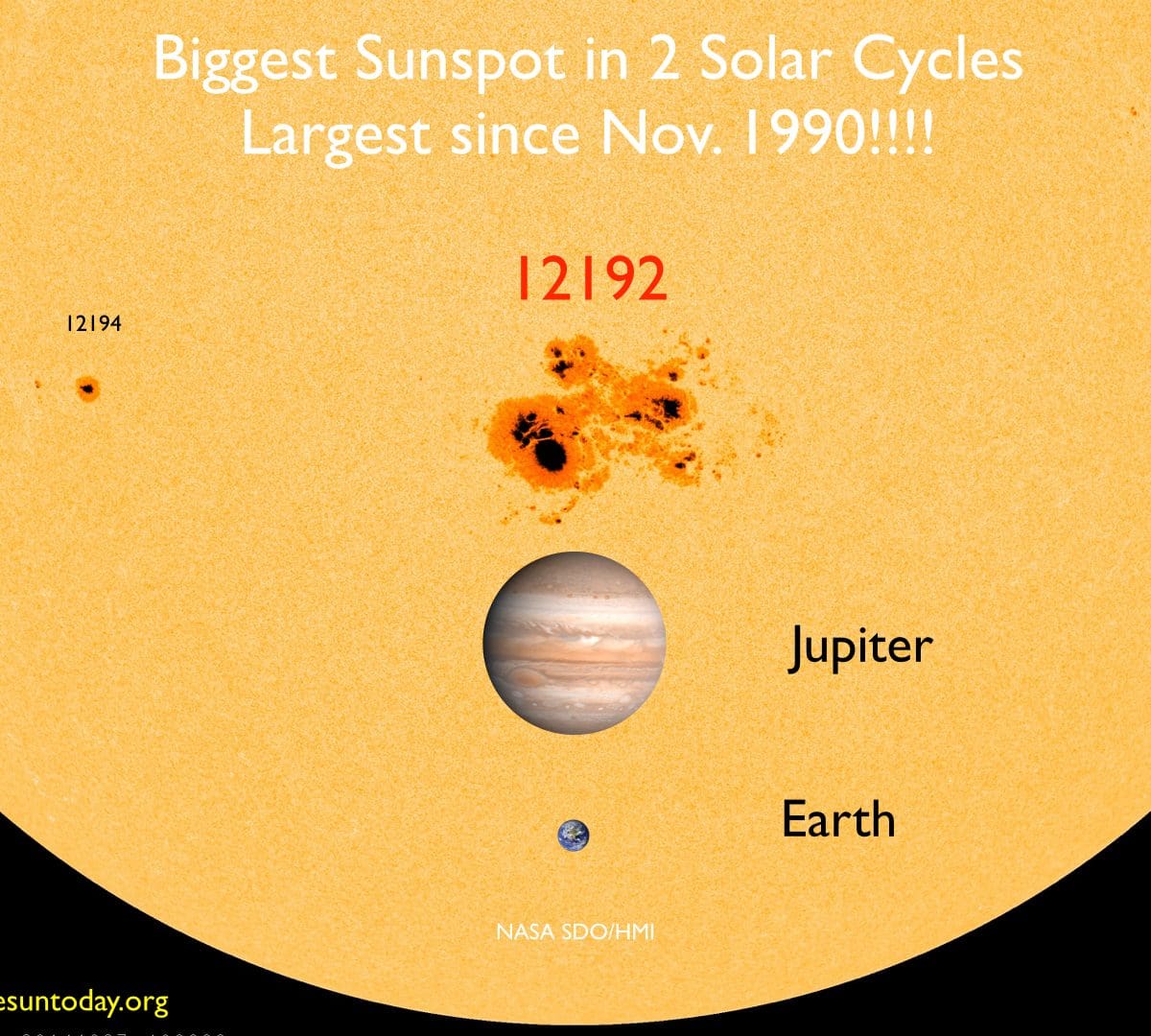
A giant filament on the eastern edge of the sun really puts the size of our star, Earth and the planets into perspective.
This structure of solar plasma, a billion plus tons of 80,000 degree Fahrenheit material, sits high above the solar surface in the hot outer atmosphere call the corona. This material is from the lower solar chromosphere but is supported in the corona by giant loops of magnetic field. The plasma itself, a collection of charged particles, is magnetized, so its structure and dynamics are controlled by solar magnetic fields. When these structures are observed on the solar disk they are called filaments but when they are seen on the edge or limb of the sun they are called prominences. These two objects were once thought to be different hence the two names but we now know they are really the same structures. Now the names are used interchangeably but are generally used just to distinguish the viewing perspective. Filaments and prominences are best seen in Hydrogen Alpha light (visible) or 304 Angstrom Extreme Ultraviolet light.
Here is a look at the filament around 2 weeks ago when it was on the East limb. This image shows the structure in 304 Angstrom EUV light from the AIA/SDO instrument on June 1, 2014. The image of Earth provides an idea of the prominence’s size. We can’t see all of the material but the structure is at least 70,000 miles or 100,000 km (8-10+ Earth diameters) long. The feature rises above the sun some 3-5+ Earths. And again these numbers are lower limits based on what we can see and not accounting for geometry.
 Two weeks later the filament had rotated to the west solar limb. We can see more material than the week before but again we can only get a rough idea (lower limit) of the sizes involved. Using the Earth as a guide the plasma rises 5+ Earths above the visible solar surface and prominence is at least 10 Earths long (~80,000 miles or 130,000 km.)
Two weeks later the filament had rotated to the west solar limb. We can see more material than the week before but again we can only get a rough idea (lower limit) of the sizes involved. Using the Earth as a guide the plasma rises 5+ Earths above the visible solar surface and prominence is at least 10 Earths long (~80,000 miles or 130,000 km.)
This image shows the prominence (since it is on the limb) in both the 304 and 171 angstrom EUV light. The 304 angstrom light shows us material around 80,000 degrees Fahrenheit while the 171 shows hotter material, ~180,000 degrees Fahrenheit. The filament or prominence material is seen best with 304 and coronal loops of magnetic field and plasma are shown by 171.
http://youtu.be/Mq2GyXpGRrU
Single images don’t show how dynamic prominences can be. This video shows the prominence during 2 days from 13:55 UT June 14 to 13:55 UT June 16 just before it rotated out of view. Images of Jupiter and Earth are shown throughout the video to provide scale. The field-of-view is roughly the upper left quarter of the sun. First the prominence is shown in the 304 angstrom channel of SDO/AIA. Plasma can be seen moving high above the solar surface. Plasma condenses seemingly out of nowhere, following invisible arches as it streams down. Towards the end of the time period some of the plasma quickly lifts away from the surface. This is a filament eruption and becomes a coronal mass ejection, which accelerates out into space.
The next part of the video shows the same area and time period in the 171 angstrom wavelength from SDO/AIA. Filament material can be seen on the solar disk (it is cooler and so darker than the surrounding corona) but it is difficult to see over the limb. What can be seen are the magnetic fields that are holding up the prominence material. We don’t actually see the magnetic fields (they are invisible). The hot coronal plasma serves as a tracer, outlining the magnetic fields. The last part of the video shows a combination of the 304 and 171 angstrom images.
credit: NASA/SDO/helioviewer





